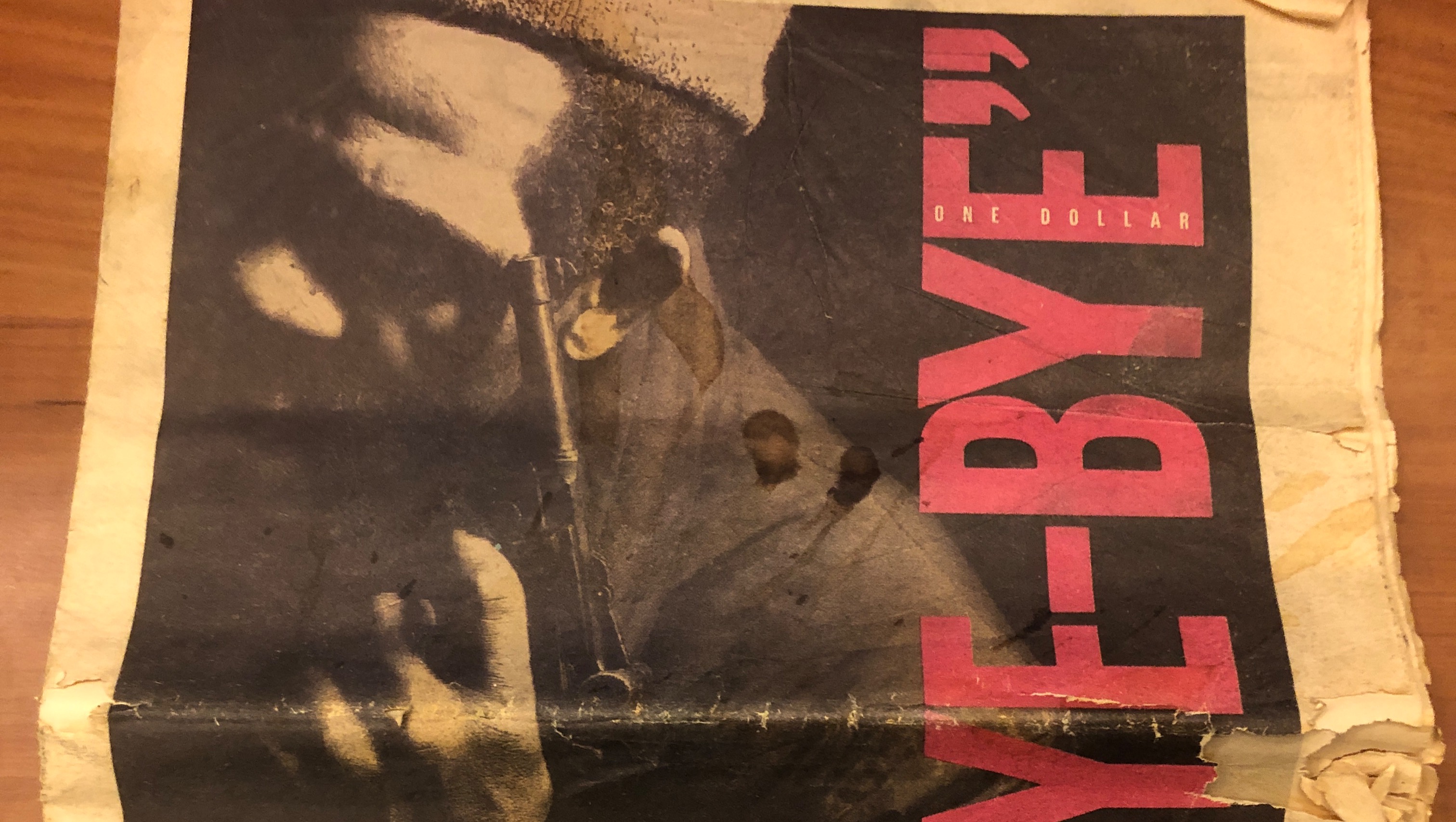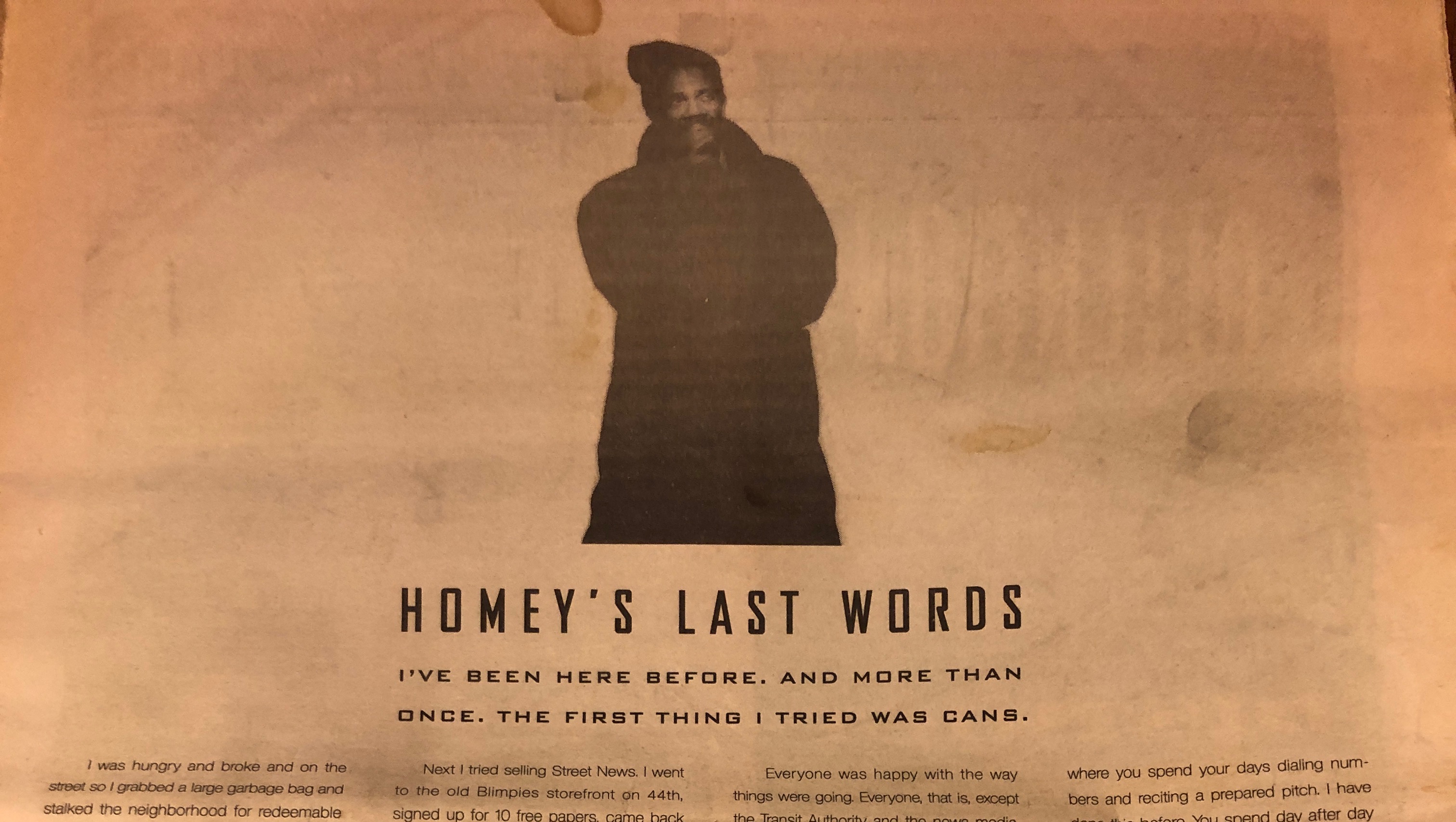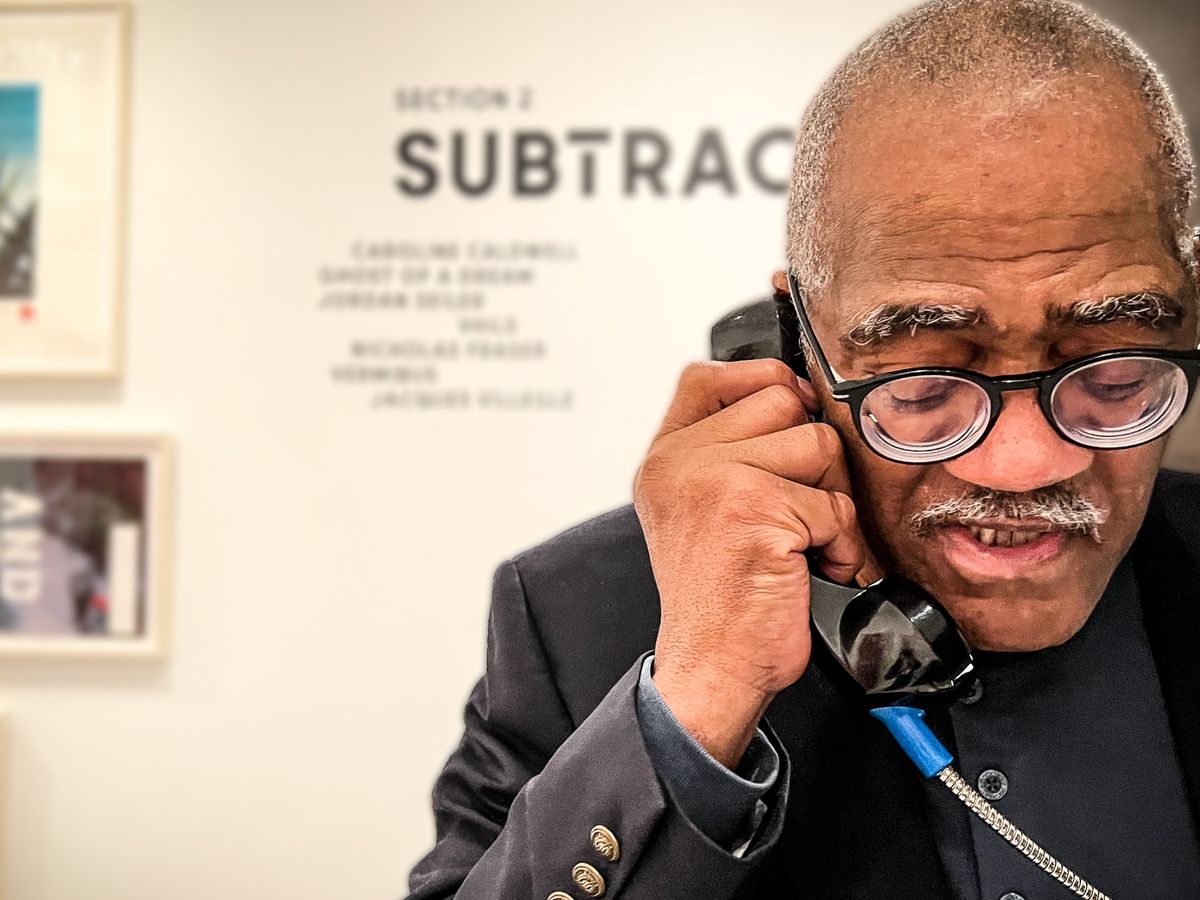TLDR:
Our friend, family member and mentor — author Lee Stringer — has been diagnosed with cancer and, because of the pandemic, was laid off from both of his jobs. We're raising money to help him through the next few months and beyond.
Lee's first book begins, "What happened was I was digging around in my hole—there’s this long, narrow crawl space in Grand Central’s lower regions, of which few people are aware and into which I moved some time ago..." This story takes us through homelessness and addiction to his new career as an author.
After Grand Central Winter, Lee published two more books. One is a writers' conversation with Kurt Vonnegut called Like Shaking Hands with God. In the third, we go back to Lee's youth in his memoir Sleepaway School.
Now, we're in another huge chapter of his life. And you get to come along.
READ ON...DAN SIMON WRITES AND INVITES:
Sometime halfway through the year 2021, my friend Lee Stringer—arguably the most important formerly homeless American writer since Jack London—told me he’d gotten a diagnosis of something called smoldering myeloma.
Smoldering is some word. Lee and I passed it back and forth between us like a football. It meant he didn’t yet have what he was diagnosed with—but would soon. Smoldering meant the fire inside Lee’s bone marrow was already burning. Eventually you can get bizarre looking cancerous tumors that jut out of you in the shape of coat hangers. You get to die fast, or you can live for a long time with the disease—though it cannot be cured. Lee still felt pretty good, and in any case the doctors still weren’t sure what Lee had.
A month or two later, I’m in knee-deep surf off the Spanish island of Minorca with my youngest child talking to two oncologists, a husband and wife, from England. Oh, so you’re cancer specialists, I say. So I have a friend who has just been diagnosed with smoldering myeloma. What can you tell me?
They tell me this: You don’t want your friend to be treated by the doc around the corner. They’ll all say they can do it, but they can’t. You’ve got to get him to the top place in the US for multiple myeloma, and that’s UAMS at the University of Arkansas in Little Rock. We know because they just hired our best multiple myeloma guy.
I came home with this little treasure chest of information and called UAMS. But Lee didn’t have a passport or New York State identification right then and it was too far to drive.
In December, finally, we set out. By then, Lee was not feeling so great. At every security point, it took an extra half-hour to get him through without proper identification. Pretty soon I was pushing him in a wheelchair, and by the time we got to Little Rock we were both exhausted. Lee had made friends, though, with almost every person we met. The sheer life force in Lee was undiminished.
That was Monday, December 13th, 2021. The tests on Lee filled all of Tuesday, Wednesday and Thursday. I accompanied him on the first day, then worked from our shared hotel room on the second and third days. On Friday morning, we packed our suitcases and returned to the hospital one last time to see the oncologist. All the nurses and receptionists knew Lee by then, some had ordered one or another of his books, and asked him to sign it for them. There was a lot pride showing in having Lee on their floor or in their ward.
The oncologist said, as he pored over the results of all Lee’s tests: If you go home, you’ll be dead in four to six weeks. If you allow me to admit you and start you right away on a regimen of five different chemotherapies, and you respond well to the treatment, you might yet still have a full and productive life ahead of you.
Lee stayed, and I flew back east alone. That was a year and a half ago. He responded beautifully to the chemo. He was able to return home in the middle of January 2022, and to continue treatment locally through Sloan Kettering’s outpatient service in White Plains. Today he’s got two book projects going, is able to walk short distances without getting short of breath, and has (all but) stopped smoking.
*
June 2023 is the 25th anniversary of the publication Grand Central Winter: Stories from the Street, Lee’s first book, a near masterpiece that appeared at the end of June 1998, with an introduction by Kurt Vonnegut.
It’s his memoir of life on the street from the mid-‘80s to the mid-‘90s, the go-go years when Wall Street was spinning in a mergers & acquisitions frenzy and that same take-no-prisoners, fast-lane attitude was mirrored on the streets of New York City, fueled by crack cocaine.
Lee was a kind of vagabond prince of the homeless life in those years. He writes about the marginalized people that were his friends, many with substance abuse and mental health issues, some selling their bodies, others with a stint in prison on their resumes. The way Lee tells it, they are living full lives. You want to invite them over to dinner to get to know them better. They aren’t scary, just fellow human beings.
*
I’m a writer, book editor and book publisher, the first by choice, the second and third by destiny for lack of a better word. Back in 1995, I found myself on the #1 train headed south. I’d just bought a copy of Street News for a dollar from a guy on the train with a stack of them. The train got stuck between stations for about 25 minutes. And me with nothing else to read. So I read that issue of Street News cover to cover.

“Bye-Bye” Street News was the headline, with a picture of a guy (it turns out it was Lee) with a gun to his head. About half the contents seemed to be written by that same guy, someone named Lee Stringer—everything from his “Tales from the Rails” column, to an Ann Landers style advice section called “Ask Homey.”
I liked the writing style. So when I finally got to my office I called the newspaper’s editor at the time, Janet Wickenhaver. Was the paper really closing? Was there some way we could help? Tell me about this Lee Stringer guy.

Fast forward a couple of weeks. Lee and I are enjoying lunch at Souen on 13th Street near Union Square. A few days later he’s under contract for a book. I didn’t know he was using crack.
Some months later, I’m visiting Lee at the Street News offices, near 43rd Street and 9th Avenue. Lee is now the editor and is also sleeping there discreetly under his desk nights, a step up from living under Grand Central Station as he’d done in the late ‘80s.
During my visit to the Street News office, he introduces me to some of the people he would be writing about in the book. I thought they seemed nice. No, no, no, he would tell me later. He had brought me to meet them so that I would tell him to stay away from them. He was beginning to realize that in order to write his book, he was going to have to turn his life around and distance himself from people who were using.
Then I got a call from his friend Indio, who would himself become editor of Street News after Lee. Lee had asked him to call me to tell me that Lee had gone into a treatment program. I said to myself, There will be no book now.
But I was wrong. After two consecutive six-month stints at Project Renewal, Lee reappeared like an elemental force of nature, a tornado, no longer a crack user, but still a free man. He’d been right: In order to write about crack and his life on the street he had needed to get off the street and off crack.
Writing a book can save you sometimes, but it’s hard to do, and in Lee’s case it was doubly hard. He had to find his strength before he would get the fuel that would strengthen him, like someone who needs to win a war before he is given the arms with which to fight. Truly amazing.
So, all out of order, these are some chapters in Lee’s life as a writer. We’re at the beginning of a new chapter, and for this one Lee needs our help.
ON THE NUMBERS:
• Lee's main concern is living expenses while he continues to go through treatment. He's been paying for his basic needs on credit cards.
• He was laid off from his two jobs during the pandemic. Until then, he had long-term employment at Project Renewal as well as by facilitating a therapeutic writers group Cedar Knolls Academy at Hawthorne. (For you fans, that's the school featured in Sleepaway School.) This is a loss of about $50K per year.
• Thanks to insurance, Lee believes he only currently has about $2K in medical debt.
• Because of his years of homelessness, Lee only receives about $700 per month in Social Security.
• He is working on a book with a client and expects to receive his next check from that in around 10 months from now. If this fundraiser can reach $30K, that should get Lee the bare minimum to get to that date.
Fundraising team: Friends of Lee5
Lee Stringer
Beneficiary


